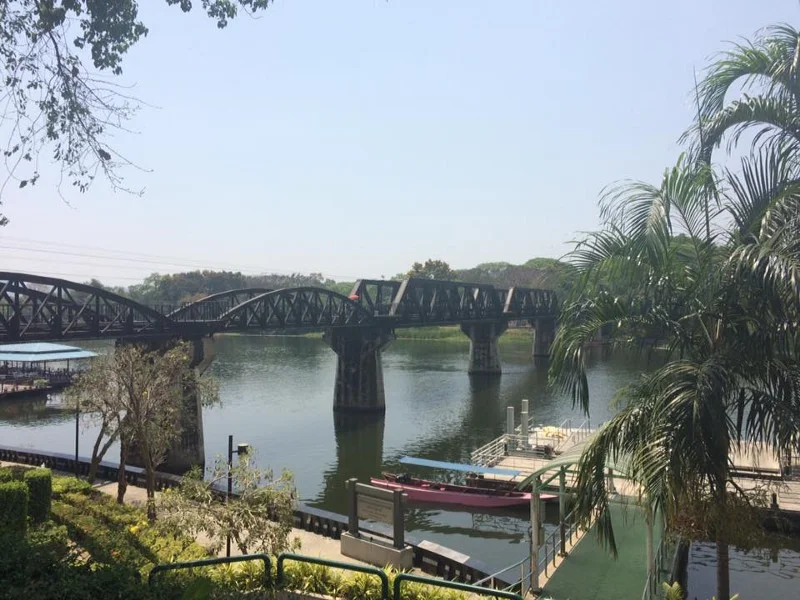Thailand: Death on the line
To the bridge on the River Kwai.
Crap hotel wifi doesn’t make Thailand any less of a fascinating country.
As seems to be the way with my recent travels, I’ve spent a lot of time thinking about the historical hardships of others, and this one’s close to home: during WWII my dad’s dad was a Japanese PoW put to forced labour building railways in horrific conditions amid disease, death and desperation. He survived: very, very many did not.
It adds a piquancy to the tourist selfies at the Bridge on the River Kwai to know that the building of the track cost something like 100,000 lives. Brits, Aussies, Americans, Dutch, various enslaved Asians: all manner of nationalities manacled into a murderous logistics operation.
Jonathan Meades has a line about how a railway snaking into a German wood will forever signify horror; here, the railway was not the deliverer unto death, but the deliverer *of* death.
Above: The famous bridge on (or over) the river Kwai (or Kwae). In bombing this, as they had to, Allied forces accidentally killed POWs at a nearby camp until the advent of guided missiles.
Above: Hellfire Pass, which the PoWs spent 18-hour shifts cutting through by the light of flame torches (hence the name). The Australian government has done a very good job on the nearby museum and four kilometres of former track is now a pathway you can walk down, if you don’t mind the 35-degree heat. Try not to feel self-pity.
Originally published on Facebook, 17 Mar 2017.







